-
Posts
5,096 -
Joined
-
Last visited
Content Type
Profiles
Forums
Events
Posts posted by Trae
-
-
Website back up. Looking a little more detailed: http://www.earthquestadventures.com/
-
 1
1
-
-
While the inner loop numbers were small compared to the suburbs... it doesn't necessarily surprise me considering how large of an area is outside the loop, as well as the fact that commuting in this city (and suburb life) was easier even a couple years ago. I have friends who bought several years ago in the burbs... but are now kicking themselves they didn't move in the loop and are just making do with their situation and commutes for now.
I think the next set of census numbers will tell a different story and you will see an even accelerated growth in the loop. Our freeways continue to get more clogged every day (and there are no quick fixes for them), and eventually people reach a tipping point where they can't stand spending 2 hours every day of their life in a car (I know I did, and went from spending 1.5 hours a day to 10 minutes a day in the car).
This is when mass transportation and expanding our regional rail system comes in (light rail and commuter rail). Growth in the Inner Loop area may accelerate, but people are going to continue moving to the suburbs in much greater numbers.
-
I found this intriguing, so I did the calculations this afternoon.
The result: the population growth in inner loop Houston is almost insignificant in the context of the overall metro growth. The total population growth inside the loop was only 13,028. Even if we loook only at the growing side of the inner loop (the west side -- west of the North Freeway, west of the South Freeway and including the CBD), the net growth was only 29,704. That is only 20% of the city's population growth and less than 2.5% of the total metro population growth. (For every additional person added to the west inner loop during the decade, we added 39 additional people elsewhere in the metro area.)
Of course, this is without the challenge numbers, where tens of thousands were supposedly missed in the eastern portions of the loop.
-
Nice that is finally opened. DFW has a good regional rail system. It's just getting people to ride it that is the problem.
-
http://www.earthquestinstitute.org/
They could just be working on it.
-
 1
1
-
-
US75 through McKinney will be entirely reconstructed and relit with 12-lamp high-mast lighting. I think it's starting to catch on up here. The new Parker Rd./US-75 SPUI also uses high-mast lighting as well as a shorter segment further down that requires extra illumination. SH-121 (Sam Rayburn Tollway) is illuminated past the Dallas North Tollway with high-mast lighting as well. I think wherever they can be built, either because of a new road or reconstruction they tend to be considered. Personally I don't think they're that bad. One of the neat features on some is they have directed cut-off lighting without any funny eyelids so the light ends up on the road and not in the properties behind them.
I always thought Houston had an interesting menagerie of those things. Coming in on IH-45 from Conroe one sees the 12-lamp variety TxDOT has adopted to an old directed lighting system from way back when north of BW8 to another style (Z-pattern) from there on to the 45/10 interchange.
So far as I can tell, there are two other places in the state that use the Z-pattern lighting system found so prolifically along Houston's freeways: a short stretch of IH-35W in Fort Worth and IH-35 and 37 in San Antonio around downtown.
They need to work on I-20. There is always random crap in the freeway lanes, but it's so dark driving through South Dallas to Forest Hill. You can't see anything. I have noticed more lighting around the freeways here in DFW, though it's mainly at freeway-to-freeway interchanges.
-
Only 6 to 8 stories? Too bad. However hideous Turnberry was, at least it would've added some density to the Uptown skyline. At least something is going on the site, though.
I think this newer development also adds density to Uptown. May not add height, but definitely at street level.
-
I'm from West Texas (Big Spring) and agree with your comment. I would like to support your comment. The comments I read are sickening.
I don't have a pony in this race but after reviewing the various websites I just do not see any comments on the Dallas forums that are negative on Houston. BUT I do see many from Houston posters knocking Dallas. Why?
The Dallas people to me seem very focused on their own problems and making improvements. They don't seem to be interested in insulting or belittling other towns. I respect that about Dallas.
LMAO, that's what you think. It goes both ways, easily. Having recently moved to DFW from Houston, they talk as bad about Houston, as Houstonians talked bad about them.
-







With how nice the campus is, I'm wondering why the corporate HQ is supposedly out of the question. The articles I've read said Exxon is still studying on whether to relocate other US offices. I'd say that includes everything, but who knows.
-
Considering that the average speed during rush hour NOW is in the low 20 mph range (not "very nearly free flowing" as Niche claims), maybe it did average 12 mph pre-reconstruction.
A quick look at Transtar will confirm this.
They were even saying during reconstruction of I-10 that it was not going to relieve congestion during rush hour. It would still be bumper to bumper, but there won't be backups at all times of the day.
-
That portion of 610-290 was fairly recent, more like 15 yrs or thereabouts. I had to make that commute.
Yes, we started with low hanging fruit, according to the mighty WIKI, we are listed #14 in ridership in the states with DART coming at #7, and we have a little over half of the ridership they have, despite the fact that they have almost ten TIMES (at 72.5 miles) mileage of track that we do.
As far as the Richmond/Uptown lines go, blame that on our spineless politicians/bureaucrats that have a tendency to look after their own shortsighted views.
Hell, that's the reason why the rail line is built the way it is. Metro got no help from the likes of Tom Delay and John Culberson.
-
The only perfect comparable is the subject, but using the subject as a comparison to itself doesn't tell you anything.
That still does not mean that the lines are similar. The system in Houston (light rail at least) is more urban rail. DART is more commuter rail because Dallas has some pretty big suburbs that want a piece of the pie, too. The only area of Dallas that our rail lines resemble each other is in Downtown Dallas. Besides that, they don't. The rail in Dallas runs on old abandoned freight corridors and/or parallel to freeways. That puts them away from a lot of people and hard to connect it with jobs (unless you work Downtown, or soon Las Colinas) since the job centers in DFW are much, much more spread out than in Houston. In Houston, the rail is run in the middle of the streets for the most part. Makes it much easier to access, plus with the city's layout, makes it easier to connect the largest employment centers. You have to connect the Inner Loop areas first before bringing in the suburbanites into the city, IMO. The rail in Dallas isn't conducive to make short trips to the store, etc. The stations are built too far away and surrounded by parking lots, something you would rather see for commuter rail stations. Speaking of commuter rail, that's what should be replacing the Park and Ride buses, even though they may be more cost effective. At least with commuter rail, it can run on the weekends and can be used for more than just weekday commuters in the morning/evening. Houston has the perfect setup for light rail in the Inner City and commuter rail coming in from the 'burbs, since the metro area is pretty centralized. It's probably why they predict the University Line alone to double the ridership in Houston. Once the Southeast/University/North Lines are all built, light rail ridership in Houston should surpass Dallas. Before Dallas' recent expansion, Houston had 67% of the riders on just seven miles of track compared to 45. Not sure what the ridership in Dallas is like now with the Green Line expansion though.
Point is, just because both get screwed in transit funds does not mean they are building similar systems. Only thing similar about them is that they both use light rail.
Edit: So, with the new Green Line in Dallas, the rail in Houston has a little over 50% of its riders, on just 10% of the track. We definitely aren't following in their footsteps.
-
Houston has about $490 million in tax revenue of which $150 million is siphoned off by the City of Houston, plus $90 million in capital contributions from federal or state agencies and $64 million in grant proceeds. So we've got $494 million to play with in a city of approximately six million people.
Denver has about $398 million in tax revenue, $93 million in grant operating assitance, and $103 million in capital grants and local contributions. They've got $594 million to play with in a city of 2.5 million people.
Salt Lake City has about $172 million in tax revenue, $60 million in federal noncapital assistance, and $276 million in capital contributions. They've got $508 million to play with in a city of 1.1 million people.
Not exactly a level playing field. This is why I'm comparing to Dallas, a city of very similar population and geography, and that is bound to the same state statutes regarding public finance.
That still doesn't mean that the rail system in Houston is designed like the one in Dallas.
-
That area seems like a prime spot for bus service. Glad it's working out well over there. Wonder why they never became Metro member cities.
-
How full is that parking garage on the weekends? I remember when it first opened, it could get pretty full, but at that time the retail was thriving and Vans was also there.
-
 1
1
-
-
My bad - A0.10 is the cover sheet.....
I figured it out.
 Much appreciated. It's too bad this movie theater couldn't work out closer to Katy at the Shops at Bella Terra, but I think it'll still attract residents from South Katy.
Much appreciated. It's too bad this movie theater couldn't work out closer to Katy at the Shops at Bella Terra, but I think it'll still attract residents from South Katy. -
The areas along the GP between the Westpark Tollway and Highway 90 is starting to fill in. Cla, what is this siteplan you're talking about? Would be nice if you could actually post a link to it, for myself and others can look at it also.
-
"The store would be across from a large H-E-B but the sources say the deal makes sense because of the area’s large population of high-income households."
The only place this could possibly be is on the southeast corner of 99, and not "across" from HEB. Still confused as to how that area will do with a new 30,000 sq foot grocery store as the traffic is horrible on the west side. I guess we'll see.
Well, it is "across" from HEB. It's on the other side of the Grand Parkway. HEB on the SW corner and Whole Foods on the SE corner. Now Sugar Land won't be the only Houston suburb with a Whole Foods. The Woodlands and League City should get one in no time.
I don't think the traffic is quite as bad on the east side where this is supposed to go. But if it's built that whole Fry/99 intersection is going to become pretty awful. Personally I think this might be better as the main anchor in Phase II of La Centerra. Although I guess you wouldn't have direct freeway access from that location, so it might cause even worse traffic issues.
Agreed, that Fry Road traffic is just horrible. Not sure there is much they can do to fix it either. They already redid the turning lanes. And the Grand Parkway may need to be expanded (one lane each direction) soon, too. Katy traffic on the side roads have gotten real bad this past decade.
-
Instead of TJ's, it's time to recruit Aldi's. Those grocery stores are so cheap and efficient. Very nice. I hope they expand into Houston soon, like they have in DFW.
-
You bring up quite a few good points and I agree with most of them.
Dallas traffic isn't that big of a deal, and the post that Trae put up (but didn't really comment on), brings up the point nicely, but I don't think it is a "mistake" to put the lines "where the people are".
While I'm not familiar enough with Dallas as a whole, I know in Houston "where the people are" and where the lines are going into, are going to be insanely congested over the next couple of decades making rail that much more efficient for people there.
There are portions of the current rail system (Med center, Reliant) is consistent with time, but the cars around it are only moving at a snail's pace. I've personally been stuck in Reliant traffic and watched 3 trains crammed full of people fly by while I had a chance to casually (and ineffectually, mind you) play angry birds in my car.
Traffic may not seem bad now, but it WILL get worse in the future.
I'll say this, Dallas traffic IS a big deal. Maybe not as much ten years ago, but with all the growth here, traffic really sucks. It is VERY multinodal, unlike Houston. You pretty much know which freeways will be backed up at which time and what direction in Houston. In DFW, they have random bottlenecks all over the place, because the jobs are so spread out. Once the Orange Line opens, it'll help, because Las Colinas and the DFW Airport area will finally be connected. There are so many cities with a competing interest, that it makes a regional system hard to do. It's easier for light rail to connect the inner loop areas of Houston, and just have commuter rail bring the suburbs into the city. Dallas used light rail to do both.
-
 1
1
-
-
^^There was an interesting article posted in the DMN a couple of days ago:
Study shows most Dallas-area jobs not inaccessible by transit
Meanwhile, he said, the agency is still counting on a boom from its 15 years of investing in rail stations. Each new station, he said, will one day welcome new residents and workplaces alike, giving more workers an easier link to jobs.“That hasn’t happened as quickly as we would have liked it to,” he said.
Dallas and its suburbs may form one of the busiest job centers in America, but when it comes to using transit to link workers to workplaces, commuters here are largely out of luck.
More than four of every five jobs in North Texas are inaccessible by public transportation for the typical commuter, according to a first-of-its-kind study by the Brookings Institution in Washington to be released Thursday morning.
In addition, more than half of the Dallas-area’s working-age population lives too far from the nearest transit stop to make it a realistic option for getting to work, the report showed.
Together, those two factors put the Dallas metropolitan area 89th out of America’s top 100 urban areas when it comes to linking workers to jobs by transit. Among the top 10 metro areas, only Miami scored worse.
The study suggests that North Texas has two big obstacles in creating a network of buses and trains that can link jobs to workers.
To begin with, the Dallas area covers a lot of land. At more than 1,400 square miles, it’s about 10 percent bigger than the Houston metro area and nearly five times as large as the Austin area, both areas that do a better job of linking jobs to workers by transit.
Unlike those areas, North Texas has no single transit authority that must provide for the entire region. Instead, each of its three agencies — Dallas Area Rapid Transit, The T in Fort Worth, and the Denton County Transportation Authority — provides service only within its own jurisdiction. Large areas are left without any transit service.
That helps explain why only 46 percent of working-age residents of the Dallas metro area live close to a transit stop, according to the report.
DART officials said Wednesday that the study overlooks how good a job the agency does in linking jobs to workers in its service area.
“DART is configured around 13 member cities, and we don’t provide services outside of that area,” Vice President Todd Plesko said. “But within those 13 cities, we provide accessibility to well over 90 percent of the jobs located there.”
Grading the region
The study’s co-author, Adie Tomer, said the Brookings research did not grade individual agencies on their performance. Instead, the research looks at how well urban areas have created transit options for their workers.
In North Texas as a whole, the answer is not very well. And the relatively sparse geographic coverage provided by DART and its two smaller counterparts is only part of the reason.
The share of jobs a typical commuter can reach by transit is much smaller here than elsewhere. That’s true in the area’s biggest cities as well as in its suburbs, the report showed.
In metro Houston, for instance, 30 percent of the region’s jobs are accessible by transit, compared with 19 percent in the Dallas area.
That’s true in part because Dallas-area jobs are more spread out than just about anywhere else in America. A 2009 study, also by Brookings, showed that 67 percent of all jobs in the Dallas metro area were located more than 10 miles from the downtown, a bigger share than anywhere in the U.S. besides Detroit and Los Angeles.
“Dallas faces really high levels of what we call job sprawl,” Tomer said. “That’s not conducive to providing transit service to people who want to get to work.”
But other areas with similar challenges have done much better at keeping transit an option for their workers, according to the report’s findings.
In Los Angeles, where jobs are more spread out than in Dallas, transit agencies have responded by locating rail or bus stops in nearly every neighborhood. Ninety-six percent of working-age residents live within three-quarters of a mile of a transit stop, the report showed.
Houston has tackled the problem differently. Residents there are slightly less likely to live near a transit stop than in the Dallas area. But Houston has ensured many more jobs are located near transit — which, Tomer said, is more important for commuters weighing whether to take transit.
“In Houston, the transit service is better coordinated with its housing and jobs,” Tomer said. “Simply put, they are doing a better job coordinating their development patterns with their infrastructure provision.”
-
You also seem to forget, not everyone lives in the 'burbs.
This would be better marketed to the people coming in for business or conventions, not to mention the occasional Midtowner.
Just a pity we couldn't get a hotel in there, I think it would have been more successful.

That's what happens when you cut so many damn corners. If the Pavilions looked like the first rendering they showed, I don't have much doubt that it would be a success. They should have kept the condo/hotel tower (just build that parking!), maybe add a 12-screen movie theater (AMC or Cinemark), add jumbotrons (with ads for the Rockets, movie ads, etc.), and probably the most important, make stores accessible from the sidewalk. There should be two entrances, one in the inside corridor, and one on the sidewalk.
-
 1
1
-
-
Sane people rely on source documents.
http://www.scribd.co...olv-Complaint-1
That verifies Trey White's Evolv being sued by MD Anderson.
Following are a few of the numerous Trey White multi-billionaire claims. Those are from a rep who is a personal friend of Trey's and off of the corporate site, not my website you will note:
http://www.myspace.c...2%3A69584322%7D
http://blog.evolvhea...potlight-51010/
Nice try! You said, "You are spreading a lot of lies on a lot of websites in the past few weeks." Quote those lies and refute them. I think the preceding cleared up the phony multi-billionaire claims and the lawsuit issue. I neglected to mention Robert Dean abandoned that Evolv Titanic captained by Trey White and took his entire team with him.
Soapboxmom

YAWN.
-
 1
1
-
-
While the area may not be very dense, but with the proper businesses, the people in the area will go to it anyway. The size of the development (anyone has numbers) and the local population would be able to support a small convenience store.
Make it classy and open up a nice washateria/wash fold place. It would probably do damned good business.
Yeah, those are very good ideas. The basics. Maybe throw in a Subway or Quiznos for good measure. They could do it.




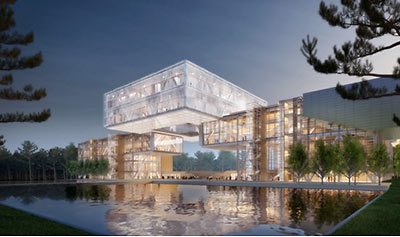
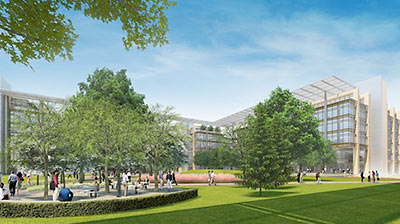

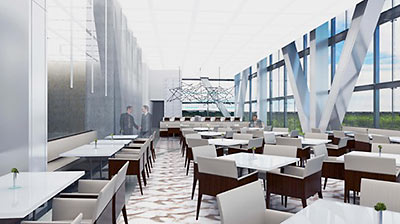
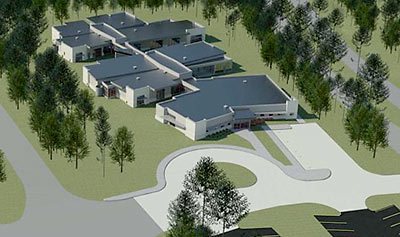
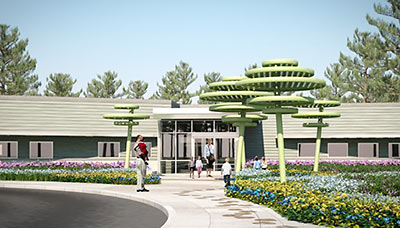
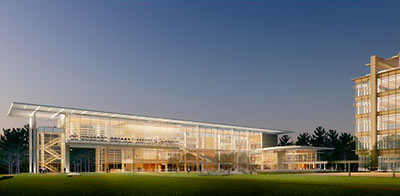

Want a route?
in Transit
Posted
Pretty cool. I submitted a route that would go from Highway 6@Bellaire east to Fondren, then north to Westheimer, then east to the Galleria station for the Uptown Line.